Lincoln City's Devil’s Lake overrun by fast-growing water weed
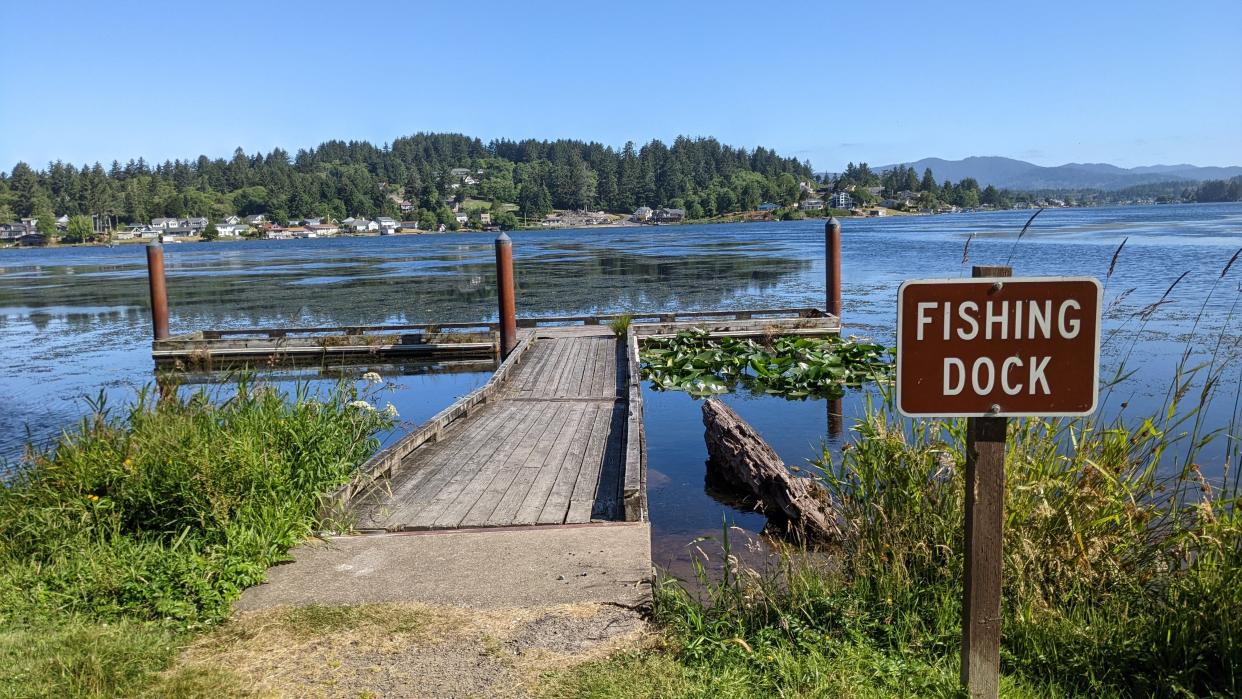
It was a difficult summer at Devil's Lake, a popular Lincoln City recreation destination where a fast-growing water weed is threatening to overtake a lake locals fear is slowly dying.
Green mats of elodea canadensis — commonly known as Canadian pondweed — clogged motorboat engines and stymied paddleboarders and anglers at the lake, which is home to a state park, trails, swimming areas and boating. The weed outcompetes native plants for space and nutrients, decreases food for local birds and wildlife and impacts the lake's fishery, locals said.
"It's really nasty stuff to deal with," Joshua Brainerd, the executive director of Devil's Lake Water Improvement District, said. “These weeds grow very fast, extremely prolific. If any part of it breaks off and drifts to a different part of the lake, it can re-root just from segments. This is a really big problem."
Homeowners want the weed removed, but solutions include using a mechanical harvester, limited use of herbicide and reintroducing a type ofgrass carp state biologists said previously wrought its own form of ecological damage to the lake.
The fix, in other words, is not simple.
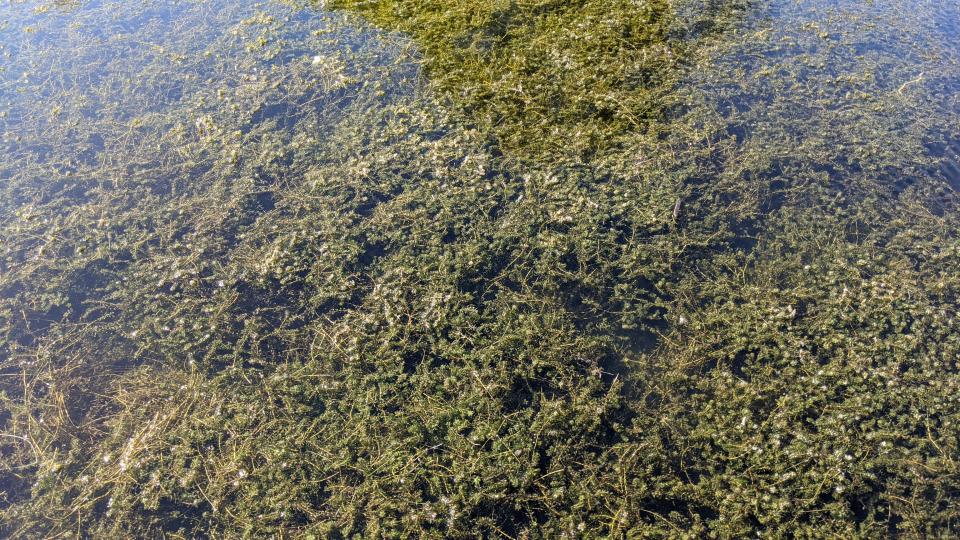
In the meantime, homeowners who surround the lake and visitors who normally come to enjoy the waters feel as though the lake is slowly dying.
“Everything gets stuck," said Mitchell Moore, who owns a home on the lake and is the secretary and treasurer of the Devil's Lake Neighborhood Association. "If you had a wave runner or anything, they die left and right. They suck it up and then they’re done.”
Why is the elodea growing now?
This isn't the first time elodea has been a problem at Devil's Lake.
The plant is native to North America, typically growing in slow-flowing rivers and lakes, but is likely not native to Devil's Lake. It was often introduced to areas as an ornamental aquarium species, which is probably how it found its way into Devil's Lake, John Spangler, the mid-coastdistrict biologist with Oregon Department of Fish and Wildlife, said.
In the 1980s, elodea had become such a problem that Devil's Lake was stocked with 32,000 sterile weed-eating Chinese grass carp to control an overgrowth of elodea and milfoil in the lake.
Now, almost all of the grass carp introduced since 1993 have died, leaving the elodea to grow unchecked.
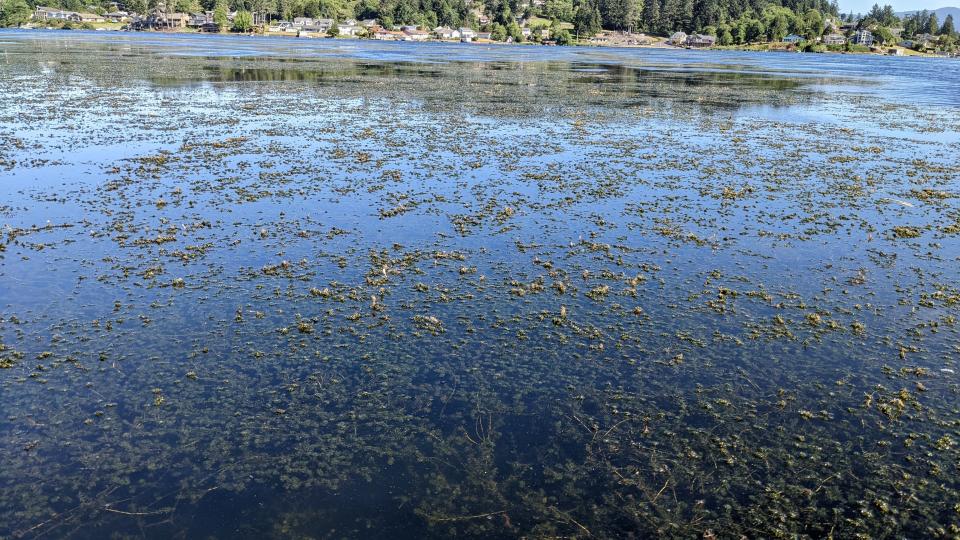
An important recreation site
Devil's Lake is an important recreation spot in Lincoln City.
When the Oregon Coast is windy — which happens a lot — Devil's Lake is typically calm and relaxing, with small beaches people can paddle onto and swimming areas for families.
Scott McCormick is a longtime visitor of Devil’s Lake. Every year, he and his family rent a house on the lake and go boating and fishing. This year, like many other lake users, he had to work around the elodea growth.
“We didn’t take our boat down there this year because I was told it wasn't worth the risk," McCormick said. “You can suck that grass up, overheat your engine, really mess it up.”
It's also hard on native plants, which are being displaced. Local birds can't see through the weeds to find fish and food and the weeds are also impacting coho salmon migration and bass fishing, the Newport News-Times has reported.
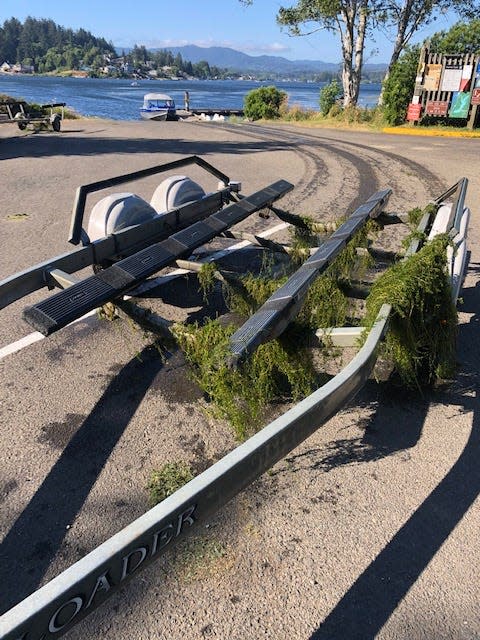
Why not just bring back the carp?
While grass carp are an effective solution to the elodea problem — and a popular option for residents — they can bring other problems, Spangler said.
Before the introduction of the fish into the lake, Devil’s Lake had a warm water fishery. When the carp were stocked, they eliminated essentially all of the aquatic vegetation. The warm water fish community crashed and the fishery along with it, Spangler said.
“The effects on those warm water fish are substantial,” Spangler said. “In order to get lakes back into those healthy environments, some aquatic vegetation is desirable.”
Devil's Lake is also a highly eutrophic lake, Spangler said, meaning there are a lot of nutrients in the water. Vegetation can help absorb a lot of the nutrients. When grass carp eat the plants, they recycle the nutrients rather than removing them, which can lead to algae blooms.
"Typically, what managers have seen is you get very little control (of the elodea) if you don't stock enough grass carp, or if you stock too many you get complete control," Spangler said. "So it's really hard to get a balance where grass carp are there and you still have aquatic vegetation."
The number of carp that could be reintroduced to the lake and how they would be managed are things the Devil's Lake Water Improvement District — which is made up of elected board members — will need to consider.
“We can’t just put the grass carp in and then hands off,” Brainerd said.
But residents have said they believe reintroducing the carp can be done responsibly and is in the best interest of the lake long-term.
Currently, the lake doesn't meet the requirements to introduce grass carp under the state's controlled species rules. Devil’s Lake is larger than 10 acres, sits within a 100-year floodplain and public use of the lake is not restricted. These characteristics deem the lake unfit for the introduction of grass carp under Oregon rules, officials said.
To get around that, the district is working with the Oregon Fish and Wildlife Commission to change the Oregon administrative rule relating to grass carp. The district will submit an application to the commission that could be approved in January.
If the application is approved, the district will need to coordinate with a growerand have the fish shipped. Moore said if the application is approved, the goal is to reintroduce the grass carp by next spring.
Current efforts to reduce elodea
While the carp situation is contemplated, other efforts have been underway to remove the elodea.
Moore described the process as three-legged, with a combination of grass carp, mechanical harvesting and herbicides.
In July, locals brought in a mechanical harvester for three weeks. The harvesting machine shears off the plants from the bottom. Then the cut plants are conveyed onboard the harvester to be deposited and disposed of onshore.
During the first three weeks of harvesting, the harvester removed 41.5 tons of elodea. It worked well enough they got a larger harvester they'll have for the next five years.
“The mechanical harvester we have here now is quite a bit bigger and it really is about 10 times more efficient,” Brainerd said.
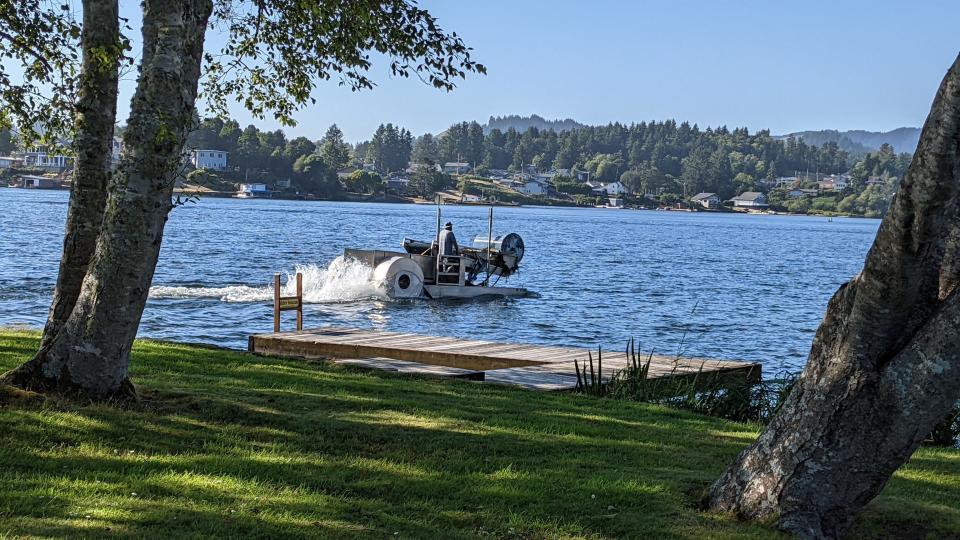
Along with the harvester, the district has implemented limited use of herbicide treatments in some areas. It started using herbicides in 2019 to combat growth of other invasive species, though Brainerd said herbicides are the last thing they want to use.
“What these materials cost as far as the herbicide and even finding people to put them down responsibly to us, it is a challenge,” Brainerd said. “So our hope is moving forward that these larger mechanical harvesters will hold the weight of our vegetation management until we can definitely get the carp back in there and then really put a dent in it.”
Fundraising was a huge part in maintaining these approaches, Brainerd said.
Moore said he asked lakeside homeowners for $300 donations to go toward the first mechanical harvester, and ended up receiving $45,550 in two weeks.
The water district also received about $300,000 from the last legislative session to go toward vegetation management and algae abatement.
The district is also asking Lincoln County voters to approve a tax levy that would provide more than $300,000 per year for five years to continue the district's vegetation management. The issue will go before voters on the Nov. 8 ballot.
The hope is among the harvester, herbicides and, eventually, the carp, the lake's health will begin to improve.
Makenzie Elliott is an outdoors intern at the Salem Statesman Journal. Reach her at MElliott@Salem.gannett.com.
This article originally appeared on Salem Statesman Journal: Lincoln City's Devil’s Lake ‘dying’ after water weed influx

